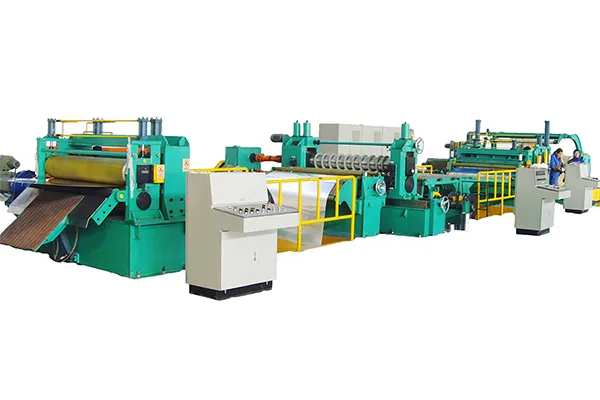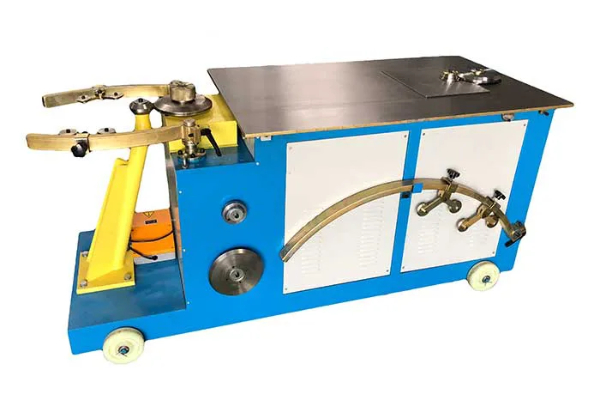
How to Integrate Metal Plate Bending Machines into Your Manufacturing Process
- By:Metmac
- 2024-08-21
- 135
In the competitive world of manufacturing, efficiency and precision are paramount. Metal plate bending machines offer a solution to these demands by providing a versatile and cost-effective way to shape metal plates. Integrating these machines into your manufacturing process is a strategic decision that can enhance productivity, reduce lead times, and improve product quality. Here’s a comprehensive guide to help you achieve a seamless integration:
Determine Your Bending Requirements
The first step is to assess your bending needs. Consider the types of metal plates you work with, the desired bend angles and radii, and the production volume. This information will help you select the appropriate machine capacity, bending technology, and tooling.
Choose the Right Machine and Technology
Various bending technologies are available, including manual, hydraulic, electric, and CNC bending machines. Each offers unique advantages. Manual machines are budget-friendly for low-volume applications. Hydraulic machines provide power and precision, while electric machines are energy-efficient and highly accurate. CNC bending machines offer advanced control and automation, enabling complex bending operations.
Optimize Tooling Selection
Selecting the correct tooling is crucial for precise and efficient bending. Factor in the metal plate thickness, material properties, and desired bend shape. Die widths, punch shapes, and bending radii should be carefully matched to the application. Quick-change tooling systems allow for easy and rapid tooling changes.
Plan Machine Placement and Workspace
Proper machine placement ensures efficient workflow and safety. Consider space requirements, access to power and utilities, and material handling capabilities. An ergonomic workspace design improves operator comfort and productivity. Good lighting, ventilation, and noise reduction measures enhance the working environment.
Establish Bending Parameters
The bending parameters, including bend angle, bend radius, and bend speed, must be carefully programmed. Test bends are essential to determine optimal settings for each material and thickness. Accurate parameter configuration ensures consistent and repeatable bending operations.
Implement Quality Control Measures
Quality control is paramount to prevent defects and ensure product compliance. Regular machine calibration and maintenance are essential. In-process inspection using laser height sensors or coordinate measuring machines can verify bend accuracy and prevent errors. Proper documentation and traceability ensure product quality and accountability.
Train Operators Thoroughly
Skilled operators are crucial for successful machine operation. Provide comprehensive training on machine safety, operating procedures, tooling maintenance, and quality control. Hands-on training with experienced technicians ensures proficiency and reduces learning curves.
Integrate with Other Processes
Metal plate bending is often integrated with other manufacturing processes, such as cutting, welding, and assembly. Consider automation or semi-automation solutions to streamline workflow. Automated loading and unloading systems can reduce labor costs and increase throughput.
Continuously Optimize and Improve
Regularly review your bending process and identify areas for improvement. Seek expert advice from machine manufacturers or industry specialists to optimize machine performance, reduce cycle times, and enhance overall productivity.
Conclusion
Integrating metal plate bending machines into your manufacturing process requires careful planning and attention to detail. By following these steps, you can optimize machine selection, tooling, workspace layout, bending parameters, quality control, operator training, process integration, and continuous improvement. As a result, you will achieve enhanced efficiency, reduced lead times, and improved product quality to gain a competitive edge in the manufacturing landscape.
-
Iron Sheet Laser Cutting Machine: Unmatched Precision for Demanding Fabrication with METMAC
2026/01/06 -
Precision Metal Cutting Machine: The Engine of Modern Manufacturing, Powered by METMAC
2026/01/06 -
Sheet Metal CNC Laser Cutting Machine: Precision Redefined with METMAC Technology
2026/01/06 -
Sheet Metal Press Brake for Sale: Find Your Precision Bending Solution with METMAC
2026/01/06
-
Advanced Sheet Metal Rolling, Laser Cutting, and Folding Machines for Precision Fabrication
2025/10/31 -
High-Performance Sheet Metal Bending and Cutting Machines for Modern Fabrication
2025/10/31 -
High-Quality Sheet Metal Equipment for Sale: Efficient Solutions for Modern Manufacturing
2025/10/31 -
High-Performance Sheet Metal Equipment for Sale: Forming and Shearing Solutions for Modern Fabrication
2025/10/22
-
A Guide to the Latest Innovations in Sheet Metal Folding Machines
2024/11/29 -
Key Features to Consider When Investing in a Sheet Metal Folding Machine
2024/11/28 -
Enhancing Precision with Advanced Sheet Metal Folding Machines
2024/11/27 -
How to Choose the Right Sheet Metal Folding Machine for Your Workshop
2024/11/26







